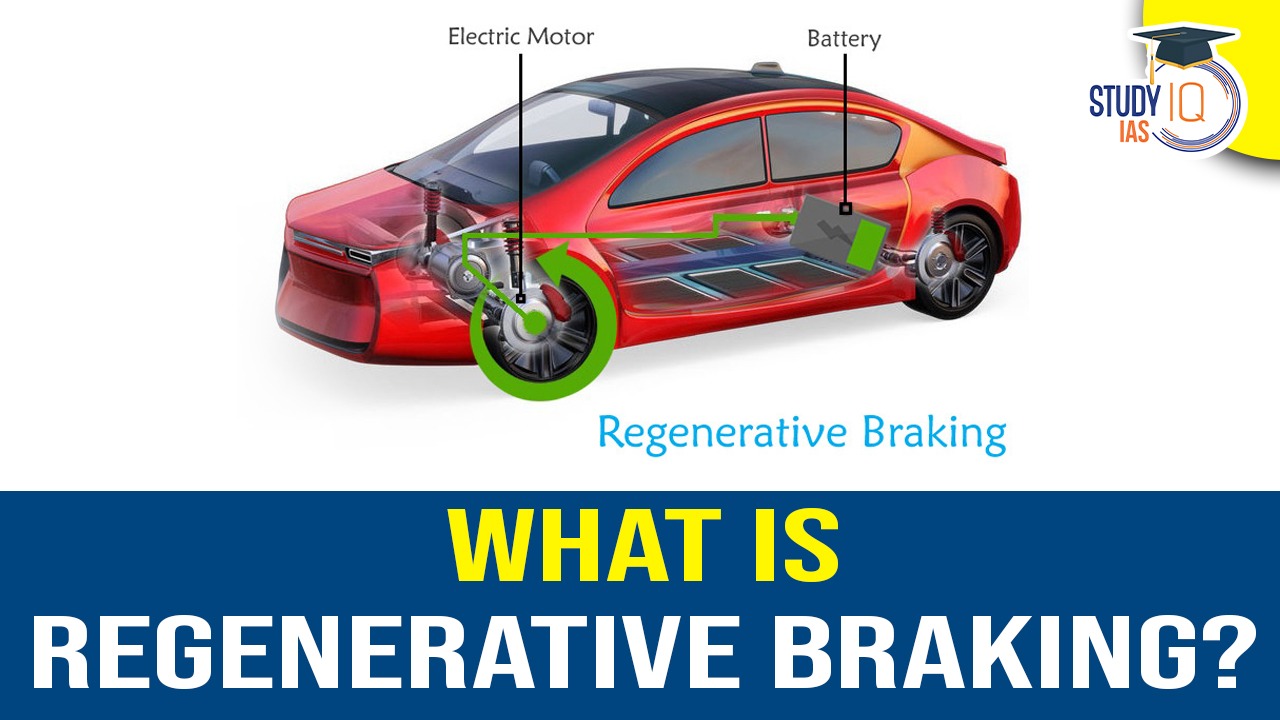Table of Contents
Context: Regenerative braking is a crucial mechanism in electric vehicles that enhances their energy efficiency.
What is Braking?
- Definition: Braking is the mechanism that slows down a moving vehicle by removing kinetic energy.
- Disc Brake:
- Mechanism: Brake pads press against a disc attached to spinning wheels, using friction to convert kinetic energy into heat.
- Design: Discs have holes to dissipate heat effectively.
- Induction Brake:
- Mechanism: Uses magnets to induce circular electric currents in a conductive wheel, creating an opposing magnetic field that slows the wheel.
- Energy Conversion: Converts kinetic energy into heat through electrical resistance in the metal wheel.
What is Regenerative Braking?
- Definition: A system that converts kinetic energy into a form that can be stored and reused.
- Dynamic Braking: Regenerative braking is a type of dynamic braking, specifically recovering energy for future use.
- Electric Vehicles:
- Battery and Motor: The battery stores electrical energy, powering the traction motor that propels the vehicle.
- Energy Recovery: During braking, the motor acts as a generator, converting mechanical energy back into electrical energy, which is stored in the battery.
- Other Braking:
- Rheostatic Braking: Another dynamic braking type where the electrical energy is dissipated as heat through resistors.
- Dual Systems: Vehicles often use both regenerative and rheostatic braking to handle excess energy or immediate needs.
How Does a Motor Become a Generator?
- Motor Components:
- Rotor: The rotating part.
- Stator: The stationary part, consisting of permanent magnets or electromagnets.
- Function:
- Lorentz Force: When a charged particle moves in a magnetic field, it experiences a force.
- Coiling: Opposite directions of current in the coil ends create opposing forces, converting electrical energy to rotary motion.
- Generator Function: Mechanical energy turns the rotor, inducing a current in the stator. Switching between motor and generator modes enables regenerative braking.
Downsides of Regenerative Braking
Limitations
- Incomplete Stopping: Regenerative braking alone often can’t stop a vehicle completely, requiring a conventional system to dissipate some kinetic energy.
- Hill Stops: Conventional brakes are needed to prevent backsliding downhill.
- Energy Recovery at Low Speed: Efficiency drops as the vehicle slows down, but is beneficial in stop-start traffic.
Other Energy Recovery Methods
- Energy Conversion Forms: The design depends on the target form of energy.
- Flywheels:
- Function: Convert mechanical energy to angular momentum.
- Advantages: Rapid energy reception and exponential energy storage with speed.
- Applications: Used in Formula One for output management and in submarines and satellites for navigation.
- Compressed Air:
- Mechanism: Kinetic energy can power a pump to compress air.
- Usage: Useful for starting internal combustion engines.


 NASA Parker Solar Probe Flies Closer to ...
NASA Parker Solar Probe Flies Closer to ...
 Silvaguard Drone, Purpose and Working Me...
Silvaguard Drone, Purpose and Working Me...
 India’s Deep Sea Technology, Need and ...
India’s Deep Sea Technology, Need and ...





















